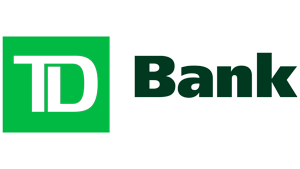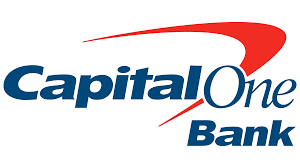Sample Bank Statements: Assortment of Reference, Types, Layouts, and Analysis

Bank statements are essential financial documents that provide a summary of transactions and account balances for a specified period. They serve as a vital tool for individuals, businesses, and financial institutions to track and manage finances effectively. In this article, we will explore the world of sample bank statements, offering an assortment of reference statements, showcasing various types of statements from different banks, demonstrating different layouts and formats, and analyzing key elements and sections in a bank statement.
Sample Bank Statements: Assortment of Reference
Bank statements vary in layout, format, and presentation. To provide a comprehensive understanding, let’s delve into an assortment of sample bank statements for reference.
- Bank Statement Example 1:
Description: This statement displays a clean and organized layout, with a focus on transaction details and an easy-to-read format.
- Bank Statement Example 2:
Description: In this statement, the bank emphasizes graphical representations, presenting an overview of account activity and balances.
- Bank Statement Example 3:
Description: This statement showcases a minimalist design, highlighting essential information while maintaining simplicity.
Through these examples, we can observe the diverse ways in which banks present information to their customers or what our service bank statement generator can provide. Let’s explore the various types of statements offered by different banks.
Various Types of Statements from Different Banks
Banks cater to the unique needs and preferences of their customers, resulting in different types of bank statements. Here, we present an overview of the various statement types offered by different banks.
- Traditional Paper Statements:
- Description: Traditional paper statements are the conventional method of providing bank statements. They are printed and mailed to customers.
- Advantages: Tangible copies for record-keeping, accessibility without an internet connection.
- Disadvantages: Slower delivery, increased paper usage, potential for loss or damage.
- Electronic Statements (e-Statements):
- Description: E-Statements are digital versions of bank statements provided through online banking platforms or email.
- Advantages: Instantaneous delivery, reduced environmental impact, easy accessibility and storage.
- Disadvantages: Dependence on technology, potential cybersecurity risks.
- Mobile Banking Statements:
- Description: Mobile banking applications offer statements directly on smartphones or tablets, providing convenient access on the go.
- Advantages: Real-time updates, enhanced security measures, user-friendly interface.
- Disadvantages: Limited screen size, dependency on mobile devices, potential for technical glitches.
- Interactive Online Statements:
- Description: Interactive online statements offer an engaging and user-friendly experience, allowing customers to explore their financial data interactively.
- Advantages: Customizable views, interactive features, data visualization.
- Disadvantages: May require a learning curve, potential compatibility issues.
Demonstration of Different Layouts and Formats
Real Bank statements are designed to present financial information in a clear and organized manner. They employ various layouts and formats to cater to different user preferences. Let’s explore some common layouts and formats used in bank statements:
- Traditional Format:
- Description: The traditional format consists of a chronological list of transactions, with the most recent transactions displayed at the top.
- Advantages: Familiar and easy to navigate, provides a comprehensive transaction history.
- Disadvantages: May lack visual appeal, limited customization options.
- Summary Format:
- Description: In the summary format, transactions are grouped into categories such as deposits, withdrawals, and fees, providing a high-level overview.
- Advantages: Allows for quick analysis, emphasizes key information, reduces clutter.
- Disadvantages: May lack detailed transaction descriptions, limited space for additional information.
- Statement with Graphical Representations:
- Description: Some bank statements incorporate graphs and charts to visually represent spending patterns, account balances, and trends over time.
- Advantages: Enhances data visualization, provides a quick snapshot of financial activity.
- Disadvantages: May require additional interpretation, limited space for textual information.
- Customizable Statements:
- Description: Certain banks offer customizable statements, allowing customers to choose the layout, format, and specific information they wish to include.
- Advantages: Tailored to individual preferences, flexibility in displaying desired information.
- Disadvantages: Requires time and effort to set up, potential for overwhelming customization options.
By offering different layouts and formats, banks strive to provide a user-friendly and informative experience for their customers. Now, let’s delve into the key elements and sections commonly found in a bank statement.
Analysis of Key Elements and Sections in a Bank Statement
Bank statements contain various elements and sections that provide essential information about an individual’s or organization’s financial transactions. Understanding these elements can help individuals effectively manage their finances. Let’s explore the key components of a bank statement:
- Account Information:
- Description: This section includes details such as the account holder’s name, account number, and contact information.
- Purpose: Identifies the account to which the statement pertains, ensuring accuracy and clarity.
- Statement Period:
- Description: The statement period indicates the timeframe for which the transactions are included in the statement.
- Purpose: Helps individuals track their financial activity within a specific period.
- Opening and Closing Balances:
- Description: The opening balance represents the amount of funds in the account at the beginning of the statement period, while the closing balance indicates the funds at the end of the period.
- Purpose: Provides an overview of the account’s financial status, highlighting any changes in balance over the statement period.
- Transaction Details:
- Description: This section lists individual transactions, including the date, description, and amount of each transaction.
- Purpose: Allows individuals to review and verify specific transactions, ensuring accuracy and detecting any unauthorized activity.
- Deposits and Credits:
- Description: This section displays all incoming funds, such as salary deposits, interest earned, or refunds.
- Purpose: Helps individuals track their income and identify sources of funds.
- Withdrawals and Debits:
- Description: Withdrawals and debits represent all outgoing transactions, including expenses, payments, and fees.
- Purpose: Enables individuals to monitor their spending and identify areas where expenses can be reduced.
- Interest Earned:
- Description: This section shows any interest earned on the account balance during the statement period.
- Purpose: Provides individuals with information about the growth of their savings and investment accounts.
- Fees and Charges:
- Description: Fees and charges include any costs incurred for account maintenance, transactions, or additional services.
- Purpose: Allows individuals to review and track the fees associated with their banking activities.
By analyzing these key elements and sections, individuals can gain a comprehensive understanding of their financial activity and make informed decisions regarding their personal or business finances.
Frequently Asked Questions (FAQs)
- Q: Can I access my bank statements online?
- A: Yes, many banks offer online banking platforms where you can access your bank statements electronically.
- Q: How long should I keep my bank statements?
- A: It is generally recommended to keep bank statements for a minimum of one year. However, you may choose to keep them longer for tax or auditing purposes.
- Q: Can I dispute a transaction on my bank statement?
- A: Yes, if you notice any unauthorized or incorrect transactions on your bank statement, you should contact your bank immediately to initiate a dispute resolution process.
- Q: Are bank statements considered valid proof of income?
- A: Bank statements can serve as valid proof of income, especially if they contain consistent and regular deposits from an employer or business.
- Q: Can I download my bank statements in different formats, such as PDF or CSV?
- A: Many banks offer the option to download your bank statements in various formats, including PDF, CSV, or Excel, for easy record-keeping and analysis.
- Q: Can I request older bank statements from my bank?
- A: Yes, most banks can provide you with older bank statements upon request. However, they may charge a fee for retrieving statements beyond a certain timeframe.
Conclusion
Bank statements play a crucial role in financial management by providing individuals and businesses with a detailed overview of their transactions and account balances. In this article, we explored an assortment of sample bank statements for reference, showcased various types of statements from different banks, demonstrated different layouts and formats, and analyzed key elements and sections found in a bank statement. Understanding how to interpret and utilize bank statements effectively can empower individuals to make informed financial decisions and maintain a healthy financial standing.
Remember, bank statements are valuable documents that should be kept securely and reviewed regularly to ensure accuracy and monitor financial activity.










